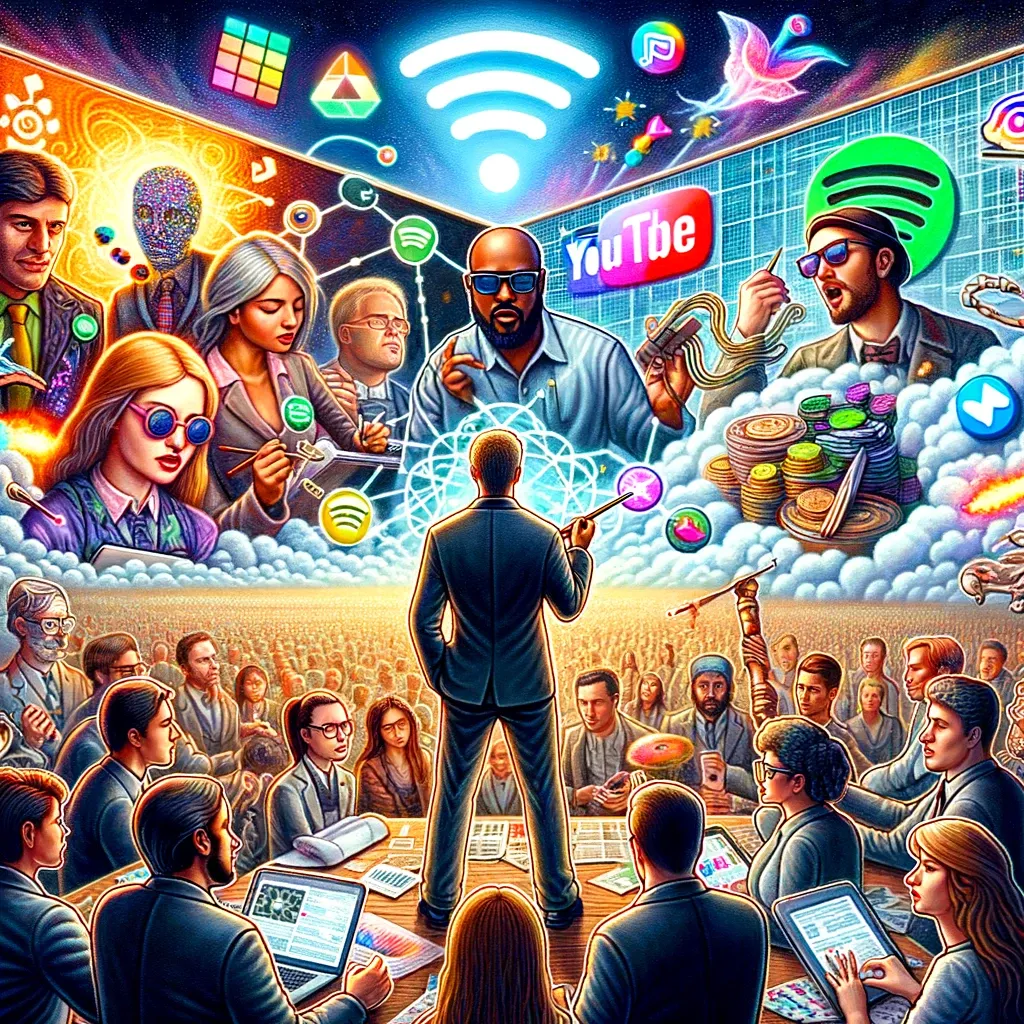Navigating the Complex World of Technology to Drive Business Success
Author: Professor Tim Bates, The Godfather of Tech
Estimated reading time: 6-8 minutes
As a tech strategist with over four decades of experience, my daily activities involve analyzing industry trends, strategizing for future advancements, and leveraging my extensive career knowledge to guide businesses toward success. Here’s a glimpse into my life as a tech strategist.
Diving into Industry Trends
Staying updated on developments in Artificial Intelligence (AI) and Machine Learning (ML) is crucial. These technologies are transforming industries, from automating mundane tasks to providing deep insights through data analysis.
“AI isn’t just about automation; it’s about augmenting human capabilities to achieve unprecedented levels of efficiency and innovation.”
– Professor Tim Bates, The Godfather of Tech
Reflecting on AI and Machine Learning (ML)
In my career, I’ve seen AI evolve from a futuristic concept to a cornerstone of modern business. At General Motors, I spearheaded the development of AI-driven tools that enhanced vehicle performance and customer satisfaction. These experiences underscore the transformative power of AI and ML.
Exploring the Internet of Things (IoT)
Examining advancements in IoT is another key focus. This technology connects devices and systems, enabling real-time data exchange and analysis. Reflecting on my time at Lenovo, where we integrated IoT to streamline operations, I appreciate how IoT enhances efficiency and opens new business models.
Addressing Cybersecurity
Cybersecurity remains a top priority. Protecting data and maintaining trust are essential in our interconnected world. My tenure at Deloitte involved crafting robust cybersecurity frameworks, which reinforced the importance of advanced threat detection and data protection measures.
Cloud Computing and Big Data
Cloud Computing Strategy Sessions
Cloud platforms offer scalable resources that enhance flexibility and efficiency. During my years consulting for various Fortune 200 companies, I guided several cloud migrations, significantly reducing costs and improving collaboration.
Big Data and Analytics
Harnessing data to derive actionable insights is a vital part of strategic planning. At GM, we utilized big data to optimize manufacturing processes, leading to substantial improvements in efficiency and product quality.
“In the realm of big data, the true value lies not in the volume of data, but in the insights we can extract and act upon.”
– Professor Tim Bates, The Godfather of Tech
Market Analysis and Strategic Planning
Market Segmentation and Customer Analysis
Effective market segmentation allows for targeted strategies. Reflecting on projects at Dow Chemical, where customer analysis played a pivotal role, I recall how understanding customer behavior drove successful product launches.
Pricing Strategy and Product Positioning
Developing pricing strategies and product positioning takes center stage. At Deloitte, I learned the intricacies of dynamic pricing models and value-based pricing. These experiences inform my current approach to creating compelling and competitive market strategies.
Channel Analysis
Analyzing distribution channels ensures products reach the right customers efficiently. My time at Lenovo involved optimizing channel strategies to enhance market coverage and customer satisfaction.
Competitive Intelligence
Market Positioning and SWOT Analysis
Conducting a SWOT analysis helps identify internal and external factors impacting business performance. This strategic tool guides my decision-making process, just as it did when I developed market positioning strategies for General Motors.
Competitor Analysis and Product Differentiation
Keeping an eye on competitors’ strategies provides valuable insights. My extensive experience in product differentiation, particularly in the automotive sector, underscores the importance of innovation and customer-centric design.
Pricing Strategy Revisited
Revisiting pricing strategies aligns them with market conditions and customer expectations. My experience at Deloitte highlighted the need for competitive pricing tactics, which I continue to refine and apply.
Is a Technology Strategist a Good Career Path?
According to 4dayweek.io Being a Technology Strategist is undeniably a prestigious and rewarding career choice. To evaluate its attractiveness, they created a scoring system that breaks down various factors:
Opportunities for Advancement (Score: 9): As a top-tier position, the Technology Strategist role offers unparalleled influence and decision-making authority. The progression from technical roles to the Technology Strategist position exemplifies growth potential within the corporate ladder, offering increased responsibilities and strategic roles.
Skill Development (Score: 9): The tech landscape is dynamic. Technology Strategists must continually adapt to technological changes, regulatory adjustments, and digital innovations. This constant evolution ensures that Technology Strategists are always learning and refining their skills.
Industry Growth (Score: 10): Every sector, whether tech, healthcare, or retail, requires a Technology Strategist. With the digital revolution, the demand is increasing, making this a high-growth career path.
Stability (Score: 8): The essential nature of technology in every business guarantees a high degree of job stability. Economic downturns might affect some sectors, but the need for tech leadership remains constant.
Networking Opportunities (Score: 8): As executives, Technology Strategists interact with industry leaders, innovators, and other influential figures, offering rich opportunities for networking and collaborations.
Flexibility (Score: 8): While the Technology Strategist role involves significant responsibilities, it also provides flexibility in terms of strategic decision-making and potential for remote work, especially in modern, digitally-forward companies.
Salary and Benefits Progression (Score: 9): Technology Strategists enjoy one of the highest compensation packages in the corporate world. As the company grows and succeeds, so does the Technology Strategist’s remuneration, reflecting their integral role.
Work-Life Balance (Score: 7): Due to the weight of responsibilities and the round-the-clock nature of the tech world, achieving a perfect work-life balance can be challenging. However, the rewards and satisfaction from the role can offset this aspect for many.
4dayaweek.io summarizes the Tech Strategist career path as, a journey lined with opportunities for personal growth, networking, and substantial rewards, making it an appealing career path for aspiring tech professionals.
My Final Thoughts
Life as a tech strategist is a dynamic blend of analyzing, strategizing, and leveraging past experiences to drive innovation. By staying informed and adaptive, we can lead our organizations to sustained success in the digital age. Embracing this journey with vision and determination is key to unlocking new possibilities and achieving excellence.


